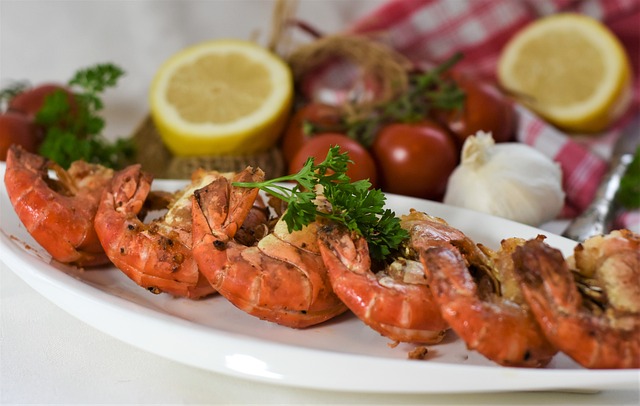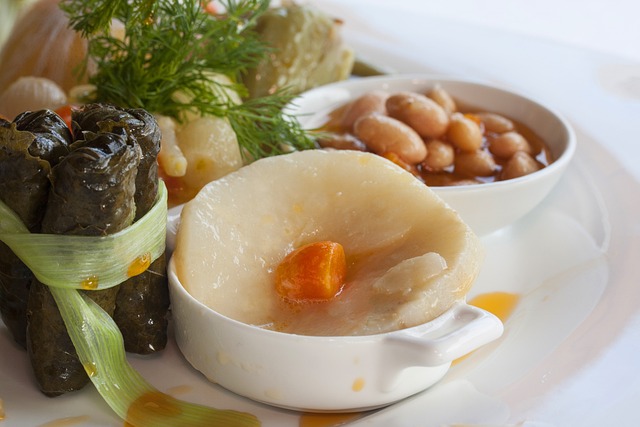Protein is one of the most discussed topics in sports nutrition, and with good reason. It is the second most common molecule in fat-free tissues of the body (water is the most common). Plant and animal proteins in the diet.
It plays a key role in recovery after physical exertion and is involved in almost all functions and processes of the body. Proteins are responsible for many functions throughout the body, including acid–base balance, energy production, cell signaling, and nutrient transport. For these and many other reasons, protein is an important dietary nutrient for a healthy lifestyle.
When protein enters the body, it is broken down into “bricks” called amino acids. There are 20 different amino acids in total, 9 of which are essential. This means that the body cannot synthesize them on its own, unlike the other 11, which it produces independently. Therefore, we must definitely get 9 amino acids from food.
When we talk about protein, we conditionally divide it into animal and vegetable. Animal protein is considered complete. This means that each unit of animal product contains a complete set of amino acids. For example, a piece of meat, egg or fish has all the amino acids in approximately equal proportions. In fact, vegetable protein differs from animal protein by the difference in the proportions of amino acids.
(1) – “You can also get essential amino acids from plant-based foods. However, most plant-based proteins do not contain all of the needed essential amino acids, and so are called incomplete proteins. If you avoid animal proteins, the best way to ensure you are consuming a healthy mix of amino acids is to enjoy a variety of plant-based proteins through the day.”

When proteins are consumed, they must first be broken down into amino acids by digestion in order to be absorbed in the intestine.
From there, they can be transported to peripheral tissues and recombine to form new proteins such as collagen, myosin and hemoglobin.
Protein synthesis is the process by which amino acids are joined together to form proteins such as dry tissues such as muscles.
A deeper understanding of what we need is always at the junction of inner intuition, personal experience and scientific knowledge and recommendations.
Protein function. Plant and animal proteins in the diet.
While fats and carbohydrates can be considered as energy macronutrients, protein is rather a structural and functional macronutrient that forms the structures of the body and performs many necessary functions of the body. Although protein can be metabolized for energy, this only happens when there is an excess of protein in the diet and/or a lack of carbohydrates to maintain normal energy production (negative energy balance). Protein and amino acids are mainly used to create body tissues; to form enzymes and cellular transporters as cellular signals; to maintain fluid balance; to buffer acids and alkalis (pH balance), in the production of hormones and neurotransmitters; and in the immune system.
(2) – “Why we need protein
Proteins are building blocks in the body. They make up bones, cartilage, muscle, blood, skin, enzymes, hormones, and vitamins. They’re essential for growth and development, repair and build cells and tissue such as muscle, and play an important role in body processes such as blood clotting, fluid balance, and the immune response.
Proteins are made from amino acids. There are some amino acids that our bodies can make on their own. These are called nonessential amino acids. But there are nine amino acids that our bodies must get by consuming foods that contain them. These are called essential amino acids, and they are necessary for normal body functioning.”
Nutritional requirements for protein
Getting enough protein in the diet is important for both athletes and non-athletes. For non-athletes, dietary protein is essential for many of the health functions discussed earlier. Those who actively engage in sports require additional protein intake to restore muscle tissue. Depending on the goals of an active person, they may need more protein in their diet than the average sedentary person.
Why is protein important? Plant and animal proteins in the diet.
Proteins perform a wide range of functions in the body, including providing support and structure to cells and tissues, regulating the immune system, and moving substances through the body.
Adequate protein intake is crucial for overall health, growth and support of body functions. Insufficient protein intake can lead to loss of muscle mass, fatigue, weakening of the immune system, and hormonal imbalance.

Which vegetables are rich in protein?
Broccoli
We all know that broccoli is rich in vitamins and minerals, but we often overlook its protein content. The average head of broccoli contains 4.3 g of protein.
Edamame
Protein–rich edamame beans are young soybeans. One cup of cooked edamame beans can provide as much as 18 grams of protein. Edamame is also a good source of calcium, magnesium and vitamin K.
Peas
Fresh or frozen peas are an excellent source of protein – half a cup can provide up to 5 g of protein. Peas also contain large amounts of fiber, iron and potassium.
Spinach
Spinach is a nutrient–rich leafy greens that contains a decent amount of protein. 100 g of raw spinach can contain about 3 g of protein.

Artichoke
Artichoke is not only a good source of fiber, but also contains some protein. A medium-sized boiled artichoke contains about 3.3 g of protein.
Brussels sprouts
Brussels sprouts are a cruciferous vegetable rich in nutrients. Half a cup contains 2 g of protein.
Curly cabbage
Another versatile leafy greens that provides a decent amount of protein – more than 2 g in one cup. Rich in nutrients, curly cabbage is an excellent addition to stews, and it also makes delicious and healthy chips.
Asparagus
Asparagus is a low–calorie vegetable, half a cup of which contains more than 2 g of protein. Asparagus is also rich in vitamins A, K and C.
Does the way vegetables are cooked affect the value of protein? Plant and animal proteins in the diet.
Remember that the amount of protein you get from vegetables may vary depending on how you cook them.
During cooking, vegetables can lose their nutrients. When vegetables are cooked, some water-soluble nutrients, including small amounts of proteins, may remain in the water. In stew recipes, it is often recommended to use water from cooking to preserve these nutrients.
Similarly, roasting or grilling vegetables at high temperatures may result in some loss of nutrients due to heat sensitivity.
Also, the structure of proteins may change during the cooking process. This will not necessarily affect the amount of protein consumed, but it can affect how much protein your body can digest, as well as how the body assimilates and uses amino acids.
However, cooking vegetables does not only have negative effects. It can also make certain nutrients, including proteins, more accessible by breaking down cell walls and facilitating their absorption by the body. For example, light heat treatment of spinach can increase the availability of certain nutrients, including proteins.

Vegan casserole with rice and broccoli. Plant and animal proteins in the diet.
Introducing the perfect vegan rice casserole with broccoli! This simple casserole has a rich cheese flavor, a super-creamy consistency, and it has a lot of delicate broccoli inflorescences. A wonderful vegetable-based dish that will keep you warm!
Ingredients
Cheese sauce
raw cashew nuts soaked overnight 1 cup
water of 2 cups
olive oil 2 tablespoons
apple cider vinegar 1 tablespoon
light miso paste 1 tablespoon
sugar 1 tablespoon
onion powder 2 teaspoons
salt to taste
garlic 1 clove
tapioca starch 2 tablespoons
Main course:
boiled rice 2 cups
broccoli inflorescences 2 cups
Instruction:
Cheese sauce
Start by soaking the cashews overnight in cold water. You can speed up the process by pouring boiling water over the cashew nuts and leaving them for 25-30 minutes.
Then rinse the cashews and drain the water.
Transfer the soaked cashew nuts to a high-speed blender. Note: You must use a blender for this recipe. A food processor will give too large a texture.
Add water, food yeast, oil, apple cider vinegar, light miso paste, sugar, onion powder, salt and garlic to the blender.
Beat on high speed for 40-60 seconds or until the sauce is completely smooth.
Transfer the sauce to a medium-sized saucepan and add the tapioca starch. Heat the sauce over medium heat, whisking constantly until it thickens. This step will take about 5 minutes. Set aside.
Casserole
Transfer the cooked rice and cheese sauce to a mixing bowl. Stir with a wooden spoon to coat the rice with the sauce. Add the broccoli florets and stir. Transfer the rice and broccoli with the sauce to a medium-sized baking dish. Cover with foil. This will prevent the top from browning too quickly and help the casserole stay creamy.
Bake the casserole for 35 minutes in a preheated 356F oven. Remove the foil and bake for another 8-10 minutes or until the top is browned.
Notes
Use fresh broccoli. For optimal flavor, I strongly recommend using fresh broccoli. Fresh broccoli has a bright green color and a firm texture. Avoid using broccoli that is starting to turn yellow or has signs of mold.
You can strain the sauce through a fine sieve if you don’t have a powerful blender.
Do not forget to cover the casserole with foil when baking. This will prevent the rice and broccoli from browning too quickly.
Gluten-free chickpea nuggets. Plant and animal proteins in the diet.
Perfect vegan nuggets!
ingredients:
cooked chickpeas, washed and dried 3 cups
coconut oil 2 tablespoons
Juice of 1 lemon
garlic 2 large cloves (minced)
tamari 3 tablespoons
ground flax seeds 1 tablespoon
4 tablespoons of boiling water
amaranth or chickpea flour 1 cup
dried thyme 1 tsp.
crushed sage 1 tsp .
Instruction:
Cooking time is 40 minutes
Combine the chickpeas, coconut oil, lemon juice, garlic and tamari in a food processor and grind until smooth with small pieces of chickpeas.
Prepare an egg substitute: mix ground flax seeds with boiling water and leave for 1 minute. Then add the mixture to the wet ingredients and mix well.
In a bowl, mix all the dry ingredients. Add the dry ingredients to the wet ones and mix. Form the cutlets.
Fry in a pan with coconut oil or bake in the oven at 356F for 15 minutes on each side.
Serve the finished cutlets together with the mushroom sauce according to the recipe.
(1,2) – Harvard Medical School; High-protein foods: The best protein sources to include in a healthy diet; By Jenette Restivo, Health Writer; Assistant Director for Digital Content Creation and Engagement, Harvard Health Publishing; December 1, 2023. https://www.health.harvard.edu/nutrition/high-protein-foods-the-best-protein-sources-to-include-in-a-healthy-diet



